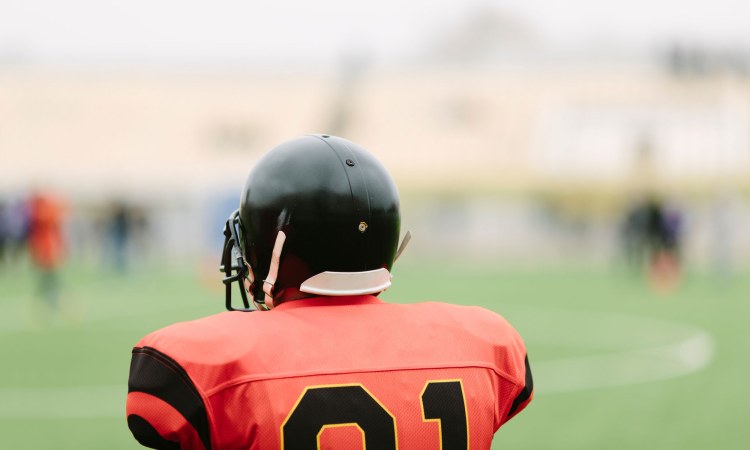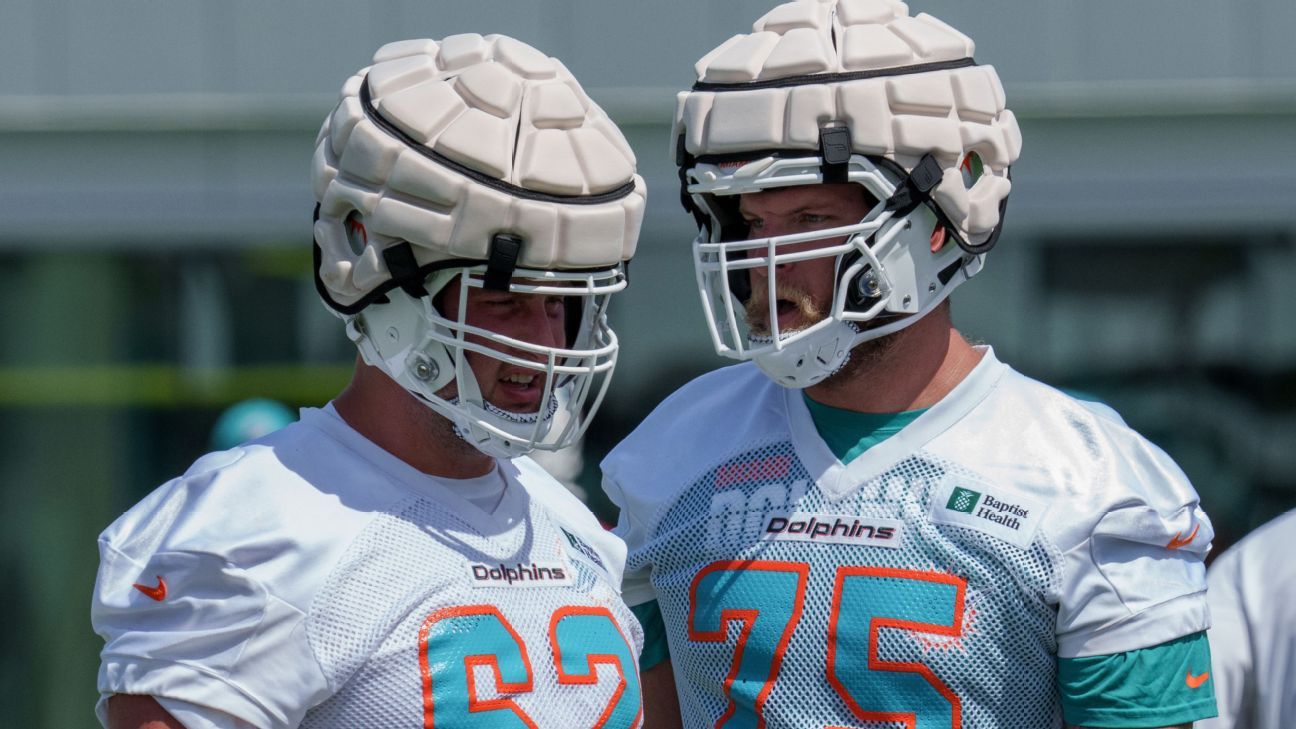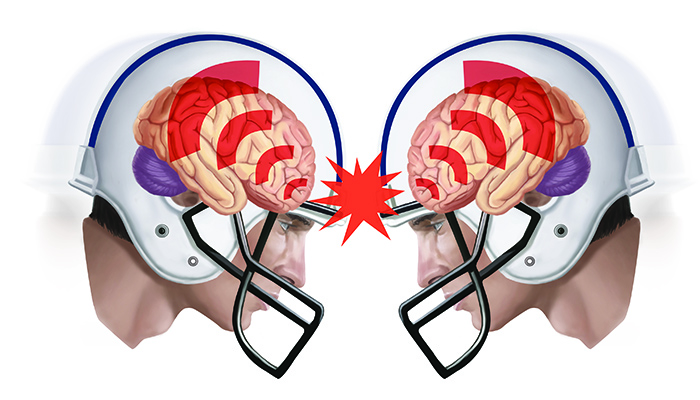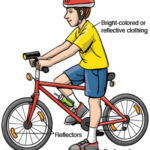Helmets protect against concussions by absorbing and dissipating impact forces, reducing brain movement inside the skull. They also provide a barrier against direct head injuries.
Concussions are a serious concern in various sports and activities. A well-designed helmet plays a crucial role in minimizing the risk of these brain injuries. It works by cushioning the head and spreading out the force from impacts. The helmet’s outer shell and inner padding work together to absorb shocks and lessen the impact on the brain.
This reduces the chances of the brain hitting the skull and causing a concussion. Wearing a helmet is essential for safety in activities like cycling, football, and skateboarding. Always choose a helmet that fits well and meets safety standards to ensure maximum protection.
Introduction To Concussions
Understanding how helmets protect against concussions starts with knowing what concussions are. Concussions are brain injuries caused by a bump, blow, or jolt to the head. They can also occur from a hit to the body that causes the head to move rapidly.
What Is A Concussion?
A concussion is a type of traumatic brain injury (TBI). It affects how the brain works. Symptoms can include headaches, confusion, and balance problems. Some people may feel dizzy or tired. Others might have trouble concentrating.
| Symptoms | Description |
|---|---|
| Headache | Persistent pain in the head |
| Confusion | Feeling unsure or lost |
| Balance Problems | Difficulty standing or walking |
| Dizziness | Feeling lightheaded or faint |
| Tiredness | Feeling very sleepy or exhausted |
Common Causes
Concussions are common in sports and recreational activities. They can happen in football, hockey, and soccer. They are also frequent in biking and skateboarding. Accidents like falls and car crashes can also cause concussions.
- Football: Hard tackles and collisions
- Hockey: Hits to the head during play
- Soccer: Heading the ball or player collisions
- Biking: Falls and crashes
- Skateboarding: Tricks gone wrong
- Falls: Slips and trips at home
- Car Crashes: Sudden stops and impacts
Helmets are designed to protect the head during these activities. They absorb some of the force from impacts. This reduces the risk of brain injury.

Credit: ideas.ted.com
Anatomy Of A Helmet
Understanding the anatomy of a helmet helps us see how it protects against concussions. A helmet’s structure is designed to absorb and distribute impact. This significantly reduces the force reaching the brain.
Outer Shell
The outer shell is the helmet’s first line of defense. It is usually made from strong materials like polycarbonate or fiberglass. This shell is tough and durable. It helps to spread out the force of an impact over a larger area.
The outer shell also prevents objects from penetrating the helmet. This stops sharp objects from reaching the head. The smooth surface helps to reduce friction during a fall. This can lessen the twisting motion that might cause brain injury.
Inner Padding
Inside the helmet, you find the inner padding. This part is crucial for comfort and protection. The padding is usually made from foam, like EPS (Expanded Polystyrene). It absorbs the energy from an impact.
The padding compresses during a hit. This action spreads out the impact force. By doing this, it lowers the chance of a concussion. The padding also provides a snug fit. This prevents the helmet from moving around during use.
| Component | Material | Function |
|---|---|---|
| Outer Shell | Polycarbonate/Fiberglass | Distributes impact force |
| Inner Padding | EPS Foam | Absorbs impact energy |
Both the outer shell and inner padding work together. They form a helmet that protects against concussions effectively. Understanding these components helps in choosing the right helmet for safety.
Mechanics Of Impact
Understanding the mechanics of impact is crucial to knowing how helmets protect against concussions. A helmet is designed to manage and mitigate the forces experienced during a collision. It does this through force distribution and energy absorption.
Force Distribution
When your head hits something, the force is spread over the helmet’s surface. This reduces the impact on any one spot. Think of it like spreading butter over bread. The butter spreads evenly, making it less thick in any one area.
Helmets have a hard outer shell. This shell distributes the force of impact across a larger area. This reduces the risk of a concussion by minimizing the force felt at a single point.
| Without Helmet | With Helmet |
|---|---|
| Force concentrated on a small area. | Force spread over a larger area. |
Energy Absorption
The helmet’s inner padding absorbs energy from the impact. This padding is usually made of foam. The foam compresses when hit, reducing the force transferred to the head.
Imagine jumping onto a mattress versus jumping onto concrete. The mattress absorbs your energy, making the jump softer. Similarly, helmet padding absorbs impact energy, protecting your brain.
- Reduces brain movement inside the skull
- Decreases risk of serious injury
Helmets often use materials like expanded polystyrene (EPS) for energy absorption. These materials are lightweight yet effective at cushioning blows.
Role Of Helmet Design
Helmets play a crucial role in protecting against concussions. The design of the helmet is key. It helps absorb and distribute the force of an impact. This is essential in preventing severe head injuries. Two important aspects of helmet design are shape and structure, and material choice.
Shape And Structure
The shape of a helmet is vital. A round shape helps to deflect impact. It reduces the force that reaches the head. The structure also includes inner padding. This padding absorbs shock and minimizes injury. Vents in the helmet help with airflow. They keep the head cool, which is also important for safety.
Material Choice
The materials used in helmets are crucial. Lightweight materials like polycarbonate are common. These materials provide strength without extra weight. The inner lining often uses foam. This foam is designed to absorb impact and distribute force. Some helmets also use advanced materials like MIPS. MIPS stands for Multi-directional Impact Protection System. It provides extra protection against rotational forces.
Standards And Testing
Understanding how helmets protect against concussions is crucial. The key lies in standards and testing. Helmets undergo rigorous evaluations to ensure safety. These evaluations focus on specific criteria designed to prevent head injuries.
Safety Certifications
Helmets must meet certain safety certifications. These certifications guarantee a basic level of protection. Some of the most recognized certifications include:
- CPSC (Consumer Product Safety Commission)
- ASTM (American Society for Testing and Materials)
- SNELL (Snell Memorial Foundation)
- CE (Conformité Européenne)
Each certification tests different aspects of helmet safety. For example, CPSC focuses on impact resistance. ASTM often evaluates retention system strength. SNELL and CE also test for similar safety standards.
Impact Testing Methods
Impact testing methods vary. These methods simulate real-life accident scenarios. Here are some common testing procedures:
- Drop Tests: Helmets are dropped from a certain height. This tests impact absorption.
- Puncture Tests: A sharp object is dropped on the helmet. This checks penetration resistance.
- Retention System Tests: Straps and buckles are tested for strength. This ensures the helmet stays on during impact.
Each test ensures the helmet can withstand specific forces. This combination of tests provides comprehensive safety assurance.
Impact Testing Methods
Testing methods vary, but all serve to ensure helmet effectiveness. These methods simulate real-life impacts to measure the helmet’s protective capabilities. Common testing methods include:
- Drop Tests: Helmets are dropped from a set height to test impact absorption.
- Puncture Tests: Sharp objects are dropped onto helmets to test penetration resistance.
- Retention System Tests: Straps and buckles are tested to ensure they hold during impacts.
These tests ensure that helmets can withstand various forces. This helps in providing comprehensive protection to the wearer.

Credit: www.espn.com
Innovations In Helmet Technology
Innovations in helmet technology are revolutionizing how helmets protect against concussions. These advancements focus on improving safety and comfort. Let’s explore some cutting-edge developments.
Smart Helmets
Smart helmets use sensors to detect impacts and measure force. They alert users to potential concussions. These helmets can send data to a smartphone app. This helps track head injuries over time. Smart helmets are especially useful for athletes. They provide real-time feedback during games and practices.
Here are some features of smart helmets:
- Impact sensors
- Data tracking
- Real-time alerts
Advanced Materials
Helmets now use advanced materials for better protection. These materials absorb and disperse impact energy. This reduces the risk of concussions. Some common advanced materials include:
| Material | Benefit |
|---|---|
| Multi-density foam | Better shock absorption |
| Carbon fiber | Lightweight and strong |
| Gel layers | Comfort and impact resistance |
These materials make helmets safer and more comfortable to wear. They also improve durability.
Innovations in helmet technology continue to evolve. These advancements aim to protect users from concussions more effectively.
Limitations Of Helmets
Helmets protect our heads from injuries. But they have limitations. Understanding these limits is crucial. This helps us stay safer.
Not A Cure-all
Helmets reduce the risk of head injuries. But they are not a cure-all for concussions. A helmet can absorb impact forces. Yet, it cannot prevent all concussions.
Concussions happen due to sudden head movements. Helmets can’t stop the brain from moving inside the skull. This means concussions are still possible.
Realistic Expectations
People must have realistic expectations. Helmets are important for safety. But they are not magic shields. They lower the risk but cannot eliminate it.
Wearing a helmet is crucial. But other safety measures are needed too. Using proper techniques and following rules helps prevent injuries.
| Helmet Benefits | Helmet Limitations |
|---|---|
| Reduces impact forces | Cannot prevent all concussions |
| Protects skull from fractures | Doesn’t stop brain movement |
| Essential for overall safety | Not a magic shield |
- Wear a helmet every time you ride.
- Use proper techniques to avoid impacts.
- Follow safety rules to reduce risks.
Credit: www.indystar.com
Future Of Concussion Prevention
The future of concussion prevention is promising with new advancements. Helmets are evolving to provide better protection against concussions. Let’s explore the latest research and public awareness efforts.
Research And Development
Scientists are working on new materials for helmets. These materials can absorb more impact. This helps in reducing the risk of concussions.
Helmet designs are also improving. Modern helmets have layers that spread out the force of a hit. This reduces the impact on the brain.
Some helmets now include smart sensors. These sensors can detect strong impacts. They send alerts to coaches and players.
| Feature | Benefit |
|---|---|
| New Materials | Better impact absorption |
| Layered Design | Force distribution |
| Smart Sensors | Impact detection |
Public Awareness
Public awareness is key in preventing concussions. Campaigns are teaching people about the dangers of concussions. They also share tips on how to protect yourself.
Schools and sports leagues are educating players and parents. They use workshops and seminars to spread the message.
- Wear a helmet
- Follow safety rules
- Report any head injuries
Some organizations have started concussion prevention programs. These programs provide resources and support to athletes. They also offer training for coaches and medical staff.
- Educational resources
- Support for injured athletes
- Training for coaches
Raising awareness can help reduce the number of concussions. It ensures everyone knows how to stay safe.
Frequently Asked Questions
How Do Helmets Prevent Concussions?
Helmets reduce the force of impact during a collision. They absorb and distribute energy, minimizing brain movement inside the skull. This helps lower the risk of concussions.
What Materials Are Used In Helmets?
Helmets use materials like polycarbonate shells and foam padding. These materials help absorb and dissipate impact energy, providing effective protection against concussions.
Do All Helmets Protect Against Concussions?
Not all helmets offer equal protection. It’s essential to choose a helmet designed for the specific activity. Look for helmets meeting safety standards to ensure optimal protection.
How Often Should You Replace A Helmet?
Helmets should be replaced every five years or after a significant impact. Wear and tear can compromise their protective capabilities, making regular replacement crucial.
Conclusion
Helmets play a crucial role in reducing concussion risks. They absorb impact and distribute force, protecting the brain. Investing in a quality helmet can make all the difference. Always ensure your helmet fits properly and meets safety standards. Stay safe and protect your head with the right gear.

